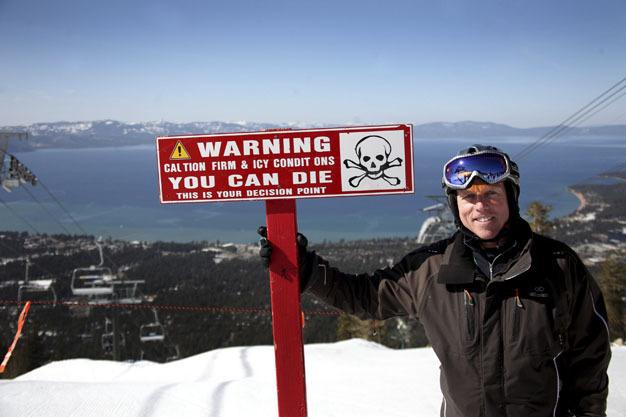The snowsport season has started, with western snow accumulations building rapidly from the Sierra to British Columbia, and at local Washington resorts.
With the holidays approaching, many an Islander family will soon be scheduling mountain trips, transportation, lodging, equipment, lessons and programs, and other activities that can keep them busy well into March, and in my case, even later.
Like many smart travelers, mountain skiers, riders and sliders would be well-advised to draw up a checklist to assure that nothing gets left behind and that there are no unpleasant surprises upon reaching one’s destination. To get the most out of your trip, consider the following.
• No. 1, Clothing and Equipment: Make up a checklist, including all the little essentials such as hat, helmet, goggles, gloves, socks, skin protective creams, etc. No one wants to spend time and money shopping immediately upon arrival, especially for things you already have at home. If I have room in my bag, I try to pack an extra pair of goggles, just in case something breaks. I also find it useful to keep all my ski-related gear in one place, so I can just grab a bag and go.
• No. 2, Vehicle: As with any type of trip, if you are traveling some distance from home, make sure your car is ready to go, with a full gas tank, tires properly inflated, windshield washers operating, perhaps carrying chains, and loaded with snacks, music, DVDs to satisfy your passengers. The words I don’t want to hear are, “Daddy, are we there yet?”
• No. 3, Travel Route: Even with GPS systems available, it’s a good idea to take a look at a road map before leaving home. Figure out the distance and allow enough time to get there. When the weather is bad, I like to cross mountain passes in daytime, and try to plan accordingly. Smart skiers arrive at the mountain early to avoid the crush of people that usually occurs between 9 and 10 a.m. An early arrival is especially important if you plan to rent equipment or sign up for a lesson or other special program.
• No. 4, Meeting Times: If traveling with a group that does not all ski and ride at the same pace, make specific arrangements where and when to meet for a lunch break or at day’s end. Cell phones don’t always work in the mountains, so it’s better to make a plan, just in case. It’s also a good idea for everyone to carry some form of identification, especially the young ones in your group. Consider putting their names on their mittens, hats, helmets and boots.
• No. 5, Meals: Seems that most people’s inner clocks decide that lunch should be at noon, which often makes the resort’s eating facilities super crowded from noon to 1 p.m. If you can take an early break, you will maximize your on-mountain time. Alternatively, put a snack in your pocket that can help delay lunch until the crowds have abated.
• No. 6, Safety: Make sure everyone in your group has an idea where each plans to go on the mountain. Obtain a trail map and carry it with you, and select trails and runs that match your ability, especially after lunch when invariably the body often refuses to obey the mind. And take care of your gear, too: check its condition regularly, and be aware whenever you leave it unattended. It’s never fun to have it just walk away.
• No. 7, Odds and Ends: Studies have shown that putting an empty rack on the top of your car reduces your mileage by about 13 percent at 55 mph, even more if you are going faster. If you use a ski rack, place the skis with the tips pointing to the rear. But if you can put your ski gear inside the vehicle, take the rack off and save yourself some gas money. One last thing: when in Vancouver, British Columbia, never park a car on the street with your luggage and gear in it. With Washington license plates, you will be an immediate target for theft. I unfortunately know firsthand.
Ski you soon.
John Naye is a Mercer Island resident and the past president of the North American Snowsports Journalists Association. He can be reached by email at jnaye@trekworks.com.



